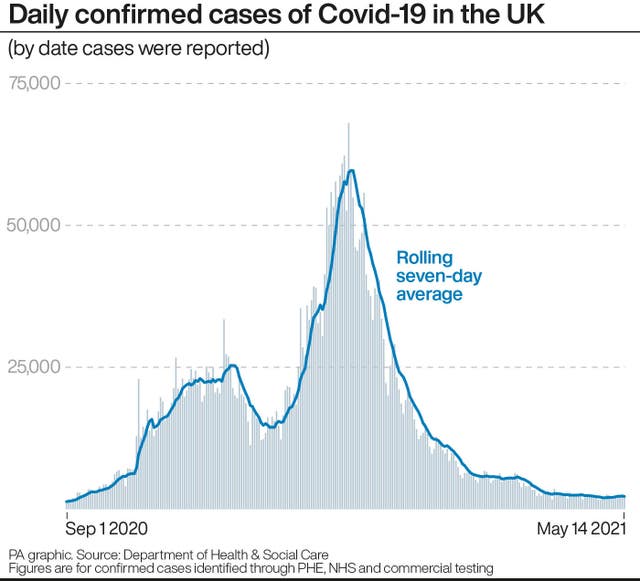Covid-19 infections continue to fall across UK, data shows
The Office for National Statistics figures relate to people living in private households and do not include care homes, hospitals and prisons.

The number of people infected with Covid-19 continues to fall across the UK, according to new data.
Office for National Statistics (ONS) figures show around one in 1,340 people in private households in England had Covid-19 in the week to May 8 – down from one in 1,180 the previous week
This is the lowest figure since the week to September 5 when the estimate, which is based on a sample of the population, stood at one in 1,400.

The figures relate to people living in private households and do not include care homes, hospitals and prisons.
In Wales, around one in 4,230 people are estimated to have had Covid-19 in the week to May 8 – down from one in 2,070 in the previous week.
In Northern Ireland, the estimate is around one in 1,430 people, down from one in 750.
The estimate for Scotland is around one in 1,250, down from one in 760 and the lowest since estimates began for Scotland in October.
The percentage of people testing positive for Covid-19 is thought to have decreased in Yorkshire and the Humber, but the trend is uncertain across the other regions of England, the ONS said.
Yorkshire and the Humber had the highest proportion of people of any region in England likely to test positive for coronavirus in the week to May 8 – around one in 780.
Meanwhile, the West Midlands had the lowest estimate at around one in 3,020.
It comes as figures released by the Government on Friday show the coronavirus reproduction number, or R value, in England remains unchanged from last week and is between 0.8 and 1.
The Scientific Advisory Group for Emergencies (Sage), which provides the estimates, said that R now spans 1 for some England regions.
However, it added these estimates do not necessarily mean R is definitively above 1 and that the epidemic is increasing, just that the uncertainty means it cannot be ruled out.





